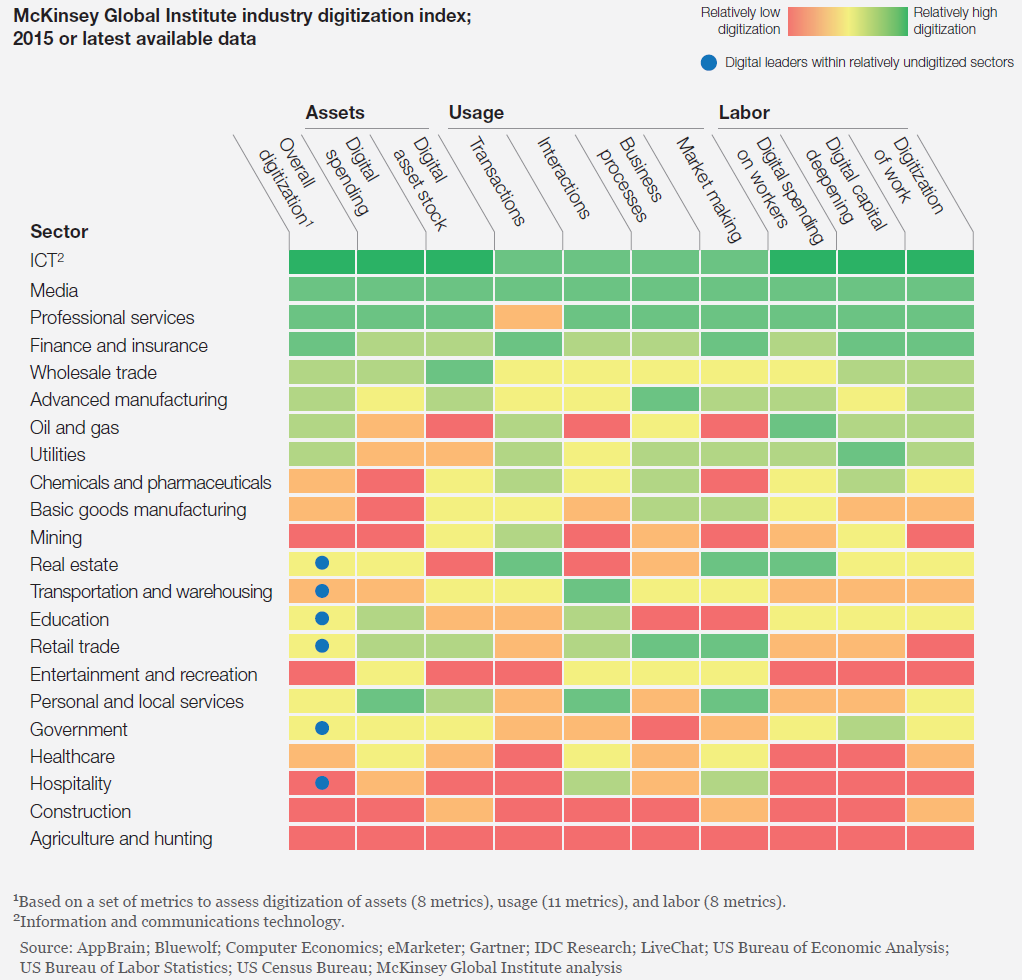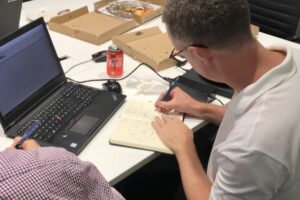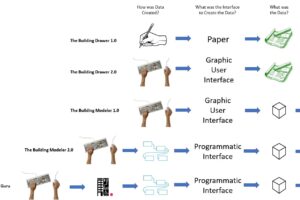5 Reasons why the AEC Industry needs an Open-Source Common Language
For an in-depth introduction to the BHoM, check out this video:
Here are the top 5 reasons why the BHoM will usher in a new era for the design and creation of the built environment and why we need it now more than ever.
Making Buildings and Cities is Difficult…..and its getting harder
Creating buildings and cities has never been easy. Even in the days or the Romans, to make even one aqueduct, road, or bridge involved the coordination of millions of bricks, all of which need to be specifically tailored to their exact right shape, size, and position based on a series of heuristic decisions. And that’s when the fundamental atoms of the built environment were only mortar and bricks – no electricity, heating, air-conditioning, or even fit out, save some famous paintings.
As we have discussed in other posts, it’s gotten harder since then to create the relatively sophisticated building and cities we currently are used to and spoiler alert, creating buildings and cities is getting harder. More and more, the industry is seeing ‘turn key’ projects – projects that have aggressive programmes and before the ink can dry on your contract, you are already being asked to deliver. There are many reasons for this, but much of it can be chalked up to the credit crunch of 2008 still having an the effect clients want to keep their money close to their chests and the commoditization of the AEC industry in general. On top of these aggressive demands from clients is an ever increasing specialization of the industry. There are more parties than ever that come into play to create a building or city, and this will likely increase as time goes on and buildings and cities become more ‘smart’, featuring embedded technology designed into them. On top of all of this, our population is growing, people are increasingly moving to cities, and climate change is expected to displace millions of people worldwide in our lifetimes. The AEC industry will be responsible for how quickly and affordably these people will be able find a roof over their heads.
With the challenge growing, the solutions we create will be more and more data-driven, requiring techniques such as machine learning to arrive at an optimal solution. And although there are some that have already began to dabble in the space of machine learning and the built environment, a fundamental cornerstone of machine learning a lots of good quality data. Our industry rarely has the quantity or quality of data to make data-drive decisions, and even if those stars align, the big data skills required to use that data are extremely rare to find in the AEC industry.
A common digital language such as the BHoM will lay a foundation for machine learning in the built environment, assure data quality can be maintained, and provide a low bar to entry for the industry to big data tools such as MongoDB.
The AEC Industry is Digitally Behind the Times – We need a new approach
The AEC industry faces all of these challenges, yet at the same time, has done itself no favors by its approach to the digital revolution of the past 3 decades. In a recent study by McKinsey, the Construction industry was ranked as one of the least digital industries out there.
You may say “well, that’s the ‘C’ of ‘AEC’, construction sites are dusty bastions of old technology. What about the architects and engineers, they use digital technology”, and you would be right (kind of). The typical view of an architect or engineer’s office used to be something like this:
However, the drafting board has long gone the way of the VHS tape and now all design work is largely delivered with via the machine. Also, in defense of the construction guys, even though construction sites still feature lots of manual labor and Boston Dynamic’s robot dogs laying rebar, its not like they are not using any technology at all. Just like the engineers and architects, the construction trailer is full of people on laptops, spinning around 3D models and making Gantt charts. So the problem isn’t that people aren’t using technology at all, but rather, the way in which they are using technology is still behind other industries.
In all of this, we see a common trend – a vertically disintegrated industry that has no common language or digital means to communicate ideas fluidly and without cumbersome manual intervention. The BHoM is the common language that will solve this underlying industry problem because at its core, that is what the BHoM is – a common language which has been specifically designed with the flexibility to be the digital lingua franca across all parties of the AEC industry.
AEC Interoperability Waste has to End
According to a study by the National Institute of Standards and Technology (NIST), the annual interoperabilty costs for the AEC industry in 2002 was was over 15 billion USD. If you are unfamiliar with the term ‘interoperability’ think this – if you put in a calendar event in your phone, how hard is it for you to get that into your Outlook or Google calendar? Do you have to spend hours manually copying and pasting data from your phone to another piece of software? No – the makers of these calendar apps made the a common language which makes it seamless for data to flow from one app to another without anything other than one click of a button. Like magic the data flows from your phone to other media – letting you go on with your life and take care of other issues.
If you are in the AEC industry however, you know this seamless transfer of data is nothing to expect, and this statistic comes as no surprise. Our industry has no common digital language. Many people spend their careers manually translating 2D sketches to 2D CAD drawings, 2D CAD drawings to 3D models, or even 3D models back to 2D sketches. All of this happens on chaotic timelines and in the end, one ‘thing’ that is created may have been created from data that was manually curated from dozens of sources.
The construction industry is vertically disintegrated, meaning there’s no one stop shop for buying a building or city. You have to get skills and expertise from multiple different companies and consultants to get what you want – architects to draw you a vision of the building, engineers to quantify how to make that vision work, and constructors to actually make the final product. Each one of these parties has its own niche software it is using to do their part of the project. When it comes time for transmitting data from one party to another, there is no common language for this interfaces, which leads to multiple data sets being managed via manual input. This communication barrier represents one of the biggest causes for miscommunication, confusion, fighting, suing, delays, and overspending on projects.
An open-source language which has a low barrier to entry such as the BHoM will alleviate these problems. Using the BHoM, teams can easily adopt a digital protocol for their project which is understandable, editable, and able to be curated by the machine – allowing us to have the same seamless flow of data that we expect from our calender apps. A key difference too with the BHoM is that its open-source nature allows you to be in charge of the data. Don’t like the way something is defined in the BHoM? No problem – change the code or create custom BHoM objects that suit your specific needs. No more waiting around for the next software patch to come through – you can finally take the reigns on your data. Speaking of controlling your data….
Proprietary BIM isn’t going to Cut it
If you are in the AEC industry, you have inevitably heard the term BIM. Saying the word “BIM” in the AEC industry for the past 10 years has been akin to saying buzz words like “Artificial Intelligence” or “Blockchain” in 2017-2018 – it instantly gives you the allure that you must be operating on a different level and are technically advanced. Having said that, most people don’t even know what the true meaning of BIM is and therefore, they don’t realize that the “BIM” that is usually promoted is normally nothing more than the use of proprietary software which promises to be the ‘one stop shop’ solution to everyone’s problems.
This is the inherent fallacy of commercial BIM as it is promoted today. When you are in an industry where every project is slightly bespoke, there are many different stakeholders to the creation of one object, and each party needs slightly different tools creating the same object, the idea of a ‘one size fits all’ tool to solve all your problems is ridiculous. What’s more, the idea that this tool would have a manual user interface that was so user friendly that it could be picked up just about anybody further increases this fallacy. An open-source language like the BHoM is necessary for the industry to stop talking about software and start talking about data.
Data gives us insight, helps us understand problems better, and helps us communicate ideas. Our industry needs to take responsibility for our data and not be completely reliant on proprietary software for our common digital vernacular, frameworks, and most of all, our data. The BHoM has been designed with these problems in mind and represents a clear solution to these problems.
Coding is the New English
My career in international megaprojects has taught me one thing – communication is key when working on teams. As you can imagine, to deliver complex projects requires expertise from all over the world. When you have people from all over the world working together, you need a lingua franca and in our day and age, that lingua franca often tends to be English. Therefore, if you don’t speak English, in many cases, you are excluded from the table where decisions are made. Coding already has been the lingua franca in many other industries, with many famous quotes on the subject from minds like Stephen Hawking, Steve Jobs, and my personal favorite, Snoop Dogg.
Coding has already started to creep its way into the AEC industry in the last decade or so (albeit slowly). The software houses that provide our industry with our standard toolset (BIM, CAD, etc) have even gone so far as to give us easy-to-use visual programming media like Grasshopper3D, Dynamo, or API’s which allow users to create their own interface with these software. This is in some ways an admission that the software houses cannot solve all of your problems for you and a clear sign that the next era will be defined by AEC practitioners who can code. Starting with Gehry Technologies at the turn of the millennium, teams in our industry started to have that one guy who could make a Grasshopper script for you. These computational ninjas we largely the most nerdy people on the team who would ‘get the bug’ when it came to using these new tools and get really good at using them because they were the only people who took the time to learn how to code. Therefore, any task that needed some computation or scripting went to them, making them even better at coding and eventually leading to new specialisms and job titles such as “Computational Designer” or “Computational Engineer”. The future of our industry revolves around professionals that know their first-principles skillset (architecture, engineering, project management, etc), but are also adept at some level in utilizing code to apply that knowledge on project.
The BHoM fits well within this history of coding in the AEC industry and is a logical next step in this digital progression. The framework of the BHoM has been designed such that you can participate with minimal skill level. You can use the BHoM via Grasshopper or Dynamo, meaning that you need not learn the scary text-based scripting like C#. Equally, if you are one of the computational ninjas who has already mastered visual scripting, reached the limits of visual scripting, and have started to learn the text-based scripting, the BHoM offers you a solid foundation of of which you can build your next computational project. What’s more, the BHoM has been designed to be community developed and therefore, it is ready for when the masses adopt our new lingua franca, coding.





